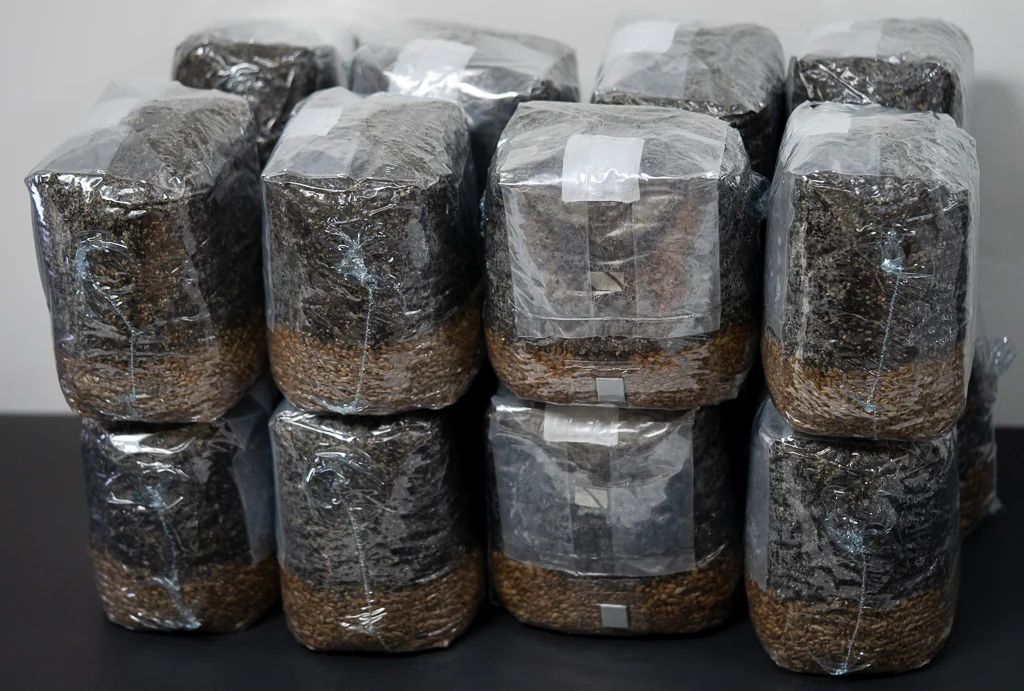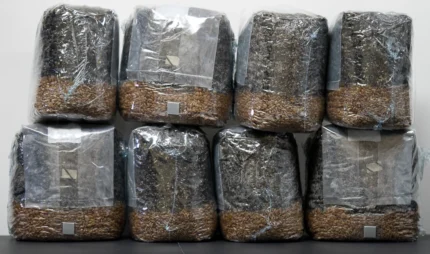Description
How to Grow Mushrooms in a Mushroom Growing Kit
Mushroom growing kits include fully colonized substrate in a sterilized plastic bag, so all that needs to be provided for fruiting are conditions such as light, temperature and humidity.
Time can be saved with this method as there’s no need to sterilize or inoculate the substrate, though you still must mist regularly – use a humidity tent or fruiting chamber if possible for maximum humidity levels.
Humidity
Humidity levels play a pivotal role in mushroom cultivation. Without adequate humidification, mushroom growing substrate will quickly dry out, potentially leading to contamination and disease outbreak. There are various methods available for providing high levels of humidity into mushroom grow chambers; one popular approach involves installing humidifiers specifically designed for mushroom cultivation which will maintain consistent humidity levels while also helping the substrate retain more moisture for longer.
Use of a fan to increase humidity is another effective method for increasing humidity in a mushroom grow room, helping circulate air and raise oxygen levels to encourage fruiting. Furthermore, an air filter in your mushroom chamber may help reduce odors and keep out pests that could harm growth.
The Forest Origins mushroom growing kit includes a sawdust block colonized with mushroom mycelium and instructions for daily misting, making setup simple without needing presoaking. While affordable and reliable options on the market exist, such as this kit which requires no presoaking process – however its directions could be more clear on when users should harvest their mushrooms; some online reviews have reported this taking weeks for results to appear.
Light
Mushrooms require light to thrive. The amount of light required varies by species of mushroom; some thrive with low or no light while others require moderate to bright illumination for proper development.
An ideal mushroom growing kit should include an adjustable light that allows for precise positioning at any level, easy maintenance and cleaning, and should include a timer to ensure that mushrooms receive enough sunlight at all times.
As your mushrooms begin to sprout, they will emit spores that may discolor furniture or walls in your room. If this concerns you, a plastic sheet or blanket could be placed over your kit as a measure to keep spores at bay.
This beginner kit provides instructions and a colonized mushroom block, making for a straightforward experience that requires no presoaking – only periodic misting with water to maintain proper growth. With attractive packaging and simple process requirements, this makes for the ideal starter set!
It features an X mark to show where to cut, making set-up easier for beginners. Furthermore, there is an indicator to notify when mist on its humidity dome (which resembles an ICEE lid) has evaporated and needs remisting.
Temperature
Temperature and humidity control are integral when cultivating mushrooms, with optimal conditions being reached between 65 degrees and 75 degrees. To ensure optimal conditions are reached when cultivating mushrooms, thermometers and hygrometers should be utilized to monitor conditions, making adjustments as necessary and insulating containers in which growing kits reside to prevent heat loss/gain.
Most mushroom growing kit contain a small bag of dry peat moss mixed with lime that serves as a casing to contain and protect mushroom mycelium in compost. To use the casing effectively, cut an opening in your plastic bag and spread out evenly over your compost before misting or spraying one cup of water over it to rehydrate it.
Temperature is essential when it comes to mushroom spore germination and colonization. The ideal temperature should range between 70degF and 85degF (21degC and 29degC). Extreme temperature fluctuations could damage mycelium or lead to contamination of your cultivation space.
Once mycelium is successfully established, it can begin producing fruits. Most mushroom growing kit produce two large crops followed by smaller ones until eventually producing none at all. Depending on which variety is selected for harvesting, initial harvest may occur approximately three to five weeks post purchase of kit.
Water
I recommend not starting your mushroom growing kit unless you can mist daily as mycelium requires water in order to grow properly and produce fruits. You could ask someone else to mist on your behalf or build a chamber to cover this need.
This kit provides you with a bag of casing – dry peat moss used as substrate – and an inoculated compost bin filled with mycelial mycelia from mushroom mycelium, with either brownish-toned soil or frosty white soil depending on when it was planted. Once opened, spread casing evenly across all of the compost, making sure that it covers everything evenly; use a fork or nail to ruffle casing to create microclimates conducive for fruiting!
Once your casing has been placed onto the compost, use a spray bottle filled with clean tap water to spray it regularly with mist from a spray bottle of mist. This will keep it moist and encourage mycelium formation on its surface; twice daily misting may be recommended until mycelium takes hold on the surface and begins fruiting (which could take up to two weeks depending on strain and environmental factors); harvest the mushrooms when their veil under their caps breaks for harvesting purposes.












Reviews
There are no reviews yet.